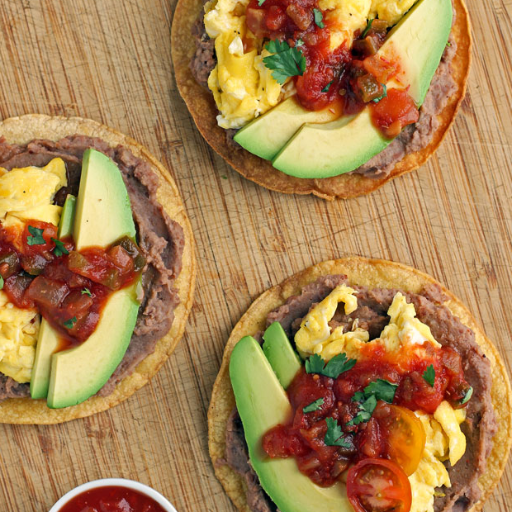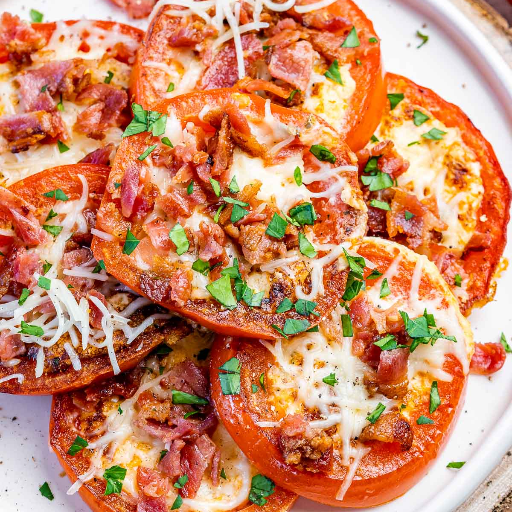Welcome to our delightful journey into the world of homemade breakfast biscuits! In this blog post, we’ll explore everything you need to know to create the perfect biscuits that will make your mornings special. Whether you’re an experienced baker or a beginner, our step-by-step guide will take you through the process from start to finish, ensuring foolproof results every time. We’ll begin with a list of essential ingredients, followed by detailed instructions, and some pro tips for achieving the ideal texture and flavor. Plus, we’ll share variations and serving suggestions to inspire creativity in your kitchen. So, gather your ingredients, roll up your sleeves, and let’s make some mouthwatering breakfast biscuits together!
What Makes a Great Breakfast Biscuit?

A great breakfast biscuit combines a tender, flaky interior with a lightly crisped exterior, creating the perfect texture contrast. The key to achieving this begins with the right ingredients; using high-quality butter and buttermilk is essential, as they contribute to both flavor and the biscuit’s tender crumb. Additionally, the perfect biscuit possesses a subtle yet satisfying flavor profile, enhanced by a hint of saltiness and the richness of butter. The technique is equally important, requiring minimal mixing to preserve the dough’s flakiness and a hot oven for a quick rise. With these elements in harmony, a breakfast biscuit becomes irresistibly delicious.
Understanding Fluffy and Crumbly Textures
Fluffy and crumbly textures in biscuits stem from the ingredients and techniques used. To achieve fluffiness, choose a flour with a moderate protein content, which provides enough structure without creating a dense texture. Cold butter, cut into small cubes and incorporated into the flour, creates pockets of steam as it melts, enhancing the fluffy result. Minimal handling of the dough maintains lightness and prevents overworking, which causes toughness.
For a crumbly texture, more fat, such as butter or shortening, is needed, as it creates tender layers by inhibiting gluten development. Buttermilk aids in tenderizing the dough, and the acidic nature reacts with baking powder to increase puffiness. Bake biscuits at a high temperature to trigger rapid leavening, ensuring a well-defined crumb. These texture principles guide you in crafting biscuits perfectly tailored to your preferences.
Essential Dry Ingredients for Successful Biscuits
To create successful biscuits, I focus on using the right dry ingredients for the desired texture. All-purpose flour is my go-to, as it balances softness and structure. Baking powder is crucial because it helps the biscuits rise, while a pinch of salt enhances the overall taste. Sometimes, I also add a little baking soda if I’m including acidic components like buttermilk. I ensure these ingredients are fresh and properly measured to achieve the best results.
Choosing the Right Biscuit Dough Consistency
In my experience in choosing the consistency of the biscuit dough, I try to make it sticky but moist not wet. It keeps the biscuits soft and well risen. I do not over-mix the ingredients as I want the biscuits to be tender. The use of a cold liquid makes achieving this texture easier as well as making it less troublesome to work with. While rolling, I dust the worktop lightly with flour, just enough to prevent the dough from getting too dry.
How to Make Biscuits from Scratch?

To make biscuits from scratch, start by preheating your oven to 425°F (220°C). Begin by mixing your dry ingredients: two cups of all-purpose flour, one tablespoon of baking powder, and a pinch of salt. If using buttermilk, add a quarter teaspoon of baking soda for additional rise. Cut in half a cup of cold butter or shortening until the mixture resembles coarse crumbs. Gradually add around three-quarters of a cup of cold buttermilk, mixing gently until just combined to form a slightly sticky dough. Turn the dough onto a lightly floured surface, gently pat it to about half an inch thick, and cut out biscuits using a round cutter. Place the biscuits on a baking sheet lined with parchment paper, and bake for 12–15 minutes until golden brown. Enjoy your freshly baked biscuits warm!
Step-by-Step Biscuit Recipe Guide
- Gather Ingredients: You’ll need all-purpose flour, baking powder, salt, cold butter or shortening, and buttermilk.
- Preheat Oven: Heat your oven to 425°F (220°C) to ensure a hot bake.
- Mix Dry Ingredients: In a bowl, combine two cups of flour, a tablespoon of baking powder, and a pinch of salt.
- Cut in Fat: Incorporate half a cup of cold butter until the mixture looks like coarse crumbs. Use a pastry cutter or your fingertips.
- Add Liquid: Slowly pour in three-quarters of a cup of cold buttermilk. Stir gently until a sticky dough forms.
- Shape Dough: Turn the dough onto a floured surface. Pat it down to about half an inch thick. Don’t overwork it.
- Cut Biscuits: Use a round cutter to shape biscuits. Press straight down without twisting for optimal rise.
- Prepare for Baking: Place biscuits on a parchment-lined baking sheet, spacing them evenly.
- Bake: Put the sheet in the oven for 12 to 15 minutes until the biscuits are golden brown.
- Serve: Best enjoyed warm from the oven with butter or jam.
Incorporating Buttermilk for Flavour and Rise
Using buttermilk in biscuit recipes enhances both flavor and texture. I choose buttermilk because its acidity reacts with baking powder to produce a light, fluffy rise. Its creamy consistency also lends a rich, tangy flavor that elevates the taste profile of the biscuits. Furthermore, buttermilk’s acidity helps tenderize the dough, ensuring each biscuit is soft and easy to enjoy.
Using a Biscuit Cutter for Perfect Shapes
To achieve uniform biscuit shapes, press the cutter straight down into the dough without twisting. Twisting can seal the dough edges, hindering proper rise. Ensure the cutter is sharp for clean edges and dust it lightly with flour between cuts to prevent sticking. Keep the dough approximately half an inch thick for optimal height and bake at the recommended temperature to ensure a golden finish. Adjust your technique based on dough consistency and baking conditions for best results.
Tips for Homemade Biscuits Success

Cold Ingredients Must Be Used: Always keep the butter and buttermilk cool. They should be kept in the fridge until needed.
Restrict The Dough Kneading: Combine the ingredients until they are just together. If you keep on mixing too much, this will give you a tough biscuit texture.
Employ Appropriate Items: Using a round biscuit cutter with edges that are slightly sharp would assist the dough in not sealing itself and rising nicely.
Ensure The Oven Is Hot: The best quality biscuits can be made through an oven that is entirely preheated. This ensures that heat is uniformly spread.
Least Contact With The Dough: Contact with the dough should be as little as possible to keep the lightness intact.
Put the baking sheet on a higher rack: If you want even coloring of the food, place the baking sheet on higher rack in the oven as then the heat will be equally dispersed.
Why Butter into the Flour Matters
The addition of butter into the dough is an effective method in achieving a biscuit with a floury middle. This method gives moisture to the flour fats preventing gluten formation when the liquid is added. The end result is biscuits which have a crumbly texture. When butter is cut into flour, it also encourages pockets of steam to be formed resulting in leavening that will occur during baking. In the end, they are perfectly flaky and of high quality.
How to Make Biscuits Flaky and Light
To make my biscuits flaky and light, I start by using cold ingredients, as this is key for creating those desired layers. I focus on quickly cutting cold butter into the flour until it resembles coarse crumbs. Then, I carefully mix in the buttermilk, ensuring not to overwork the dough. The dough needs to be handled minimally to prevent toughening. I cut the dough without twisting the cutter, which maintains the dough layers. Lastly, I bake them immediately in a hot oven to get a perfect rise and flaky texture.
Can Buttermilk Biscuits Be Savoury?

Absolutely, buttermilk biscuits can be savory! By incorporating ingredients such as herbs, cheese, or spices into the dough, you can transform the flavor profile of your biscuits. For example, adding shredded cheddar and chopped chives can create a delicious cheddar-chive biscuit. Other savory options include including cooked bacon pieces or a sprinkling of garlic powder, which can pair wonderfully with a range of meals. The adaptability of buttermilk biscuits makes them an excellent choice for savory applications, offering a versatile base for creative culinary combinations.
Exploring Savoury Ingredients and Additions
When exploring savory ingredients, I often start with herbs like rosemary and thyme, which add depth and aroma to my biscuits. Adding cheese is another favorite approach; sharp cheddar or creamy gouda meld beautifully with the dough. Sometimes, I’ll incorporate bacon bits or diced ham for a meaty texture. I also experiment with spices—cayenne or smoked paprika gives my biscuits a subtle kick. Each ingredient alters the flavor in a unique way, and by mixing and matching, I create a variety of delightful combinations tailored to my taste.
Pairing Biscuits with Sausage Gravy
Enjoying sausage gravy with biscuits is an absolute delight, as it is a warm sauce, ideal for slathering over biscuits during breakfast. Start by cooking sausage meat in a skillet. Once cooked, incorporate some flour and rot and let the mixture cook. Pour in the milk as you continuously stir the mixture until a desired gravy thickness is attained. Add some salt, black pepper, and a dash of cayenne pepper to enhance flavor in the gravy. Take warm, soft biscuits and pour the hot gravy over it. Best served with a portion of fresh fruits and eggs, this southern dish taste absolutely divine.
Transforming Biscuits into a Breakfast Sandwich
To transform biscuits into a delicious breakfast sandwich, start by slicing the freshly baked biscuit in half. Fill the biscuit with your choice of protein, such as a fried or scrambled egg and crisp bacon or sausage patty. Add a slice of cheese, typically cheddar or American, to melt between the warm components. You can also include toppings like fresh spinach or sliced tomatoes for added flavor and a touch of freshness. Consider spreading a layer of butter or a dollop of mayo on the biscuit for extra richness. This simple yet satisfying creation balances textures and flavors, making it a perfect start to any morning.
What Are the Best Practices for Baking Perfect Biscuits?

When it comes to baking perfect biscuits, several best practices can ensure fluffy, tender results. First, always use cold butter or shortening and handle the dough as little as possible to maintain its tenderness. Accurate measurements are crucial, so use a kitchen scale if available. Preheat the oven thoroughly to ensure even baking, and place the biscuits close together on the baking sheet for a better rise. Consider using buttermilk instead of regular milk for added flavor and texture. Additionally, avoid over-kneading the dough; a gentle touch is best to prevent the development of too much gluten, which can lead to tough biscuits. Lastly, brush the tops with milk or melted butter before baking to promote browning and add extra flavor.
Using a Baking Sheet for Even Cooking
Using a baking sheet plays a crucial role in achieving even cooking for biscuits. I make sure to place the biscuits close together to encourage a better rise by trapping steam. This setup also ensures that heat surrounds each biscuit evenly, preventing over-browning on one side. Before placing them in the oven, I check that it is preheated properly, which further promotes an even bake. By choosing a quality baking sheet, I ensure proper heat distribution, resulting in biscuits that are golden brown and perfectly cooked.
Controlling Oven Temperature for Optimal Results
The biscuits can be watchfully prepared if one is able to control the heat intensity in the oven, thus the oven’s heat degree gauges are instrumental. It is advised that for the baking process the first step should involve putting the oven degree to around 425 degrees Fahrenheit, which is around 220 degrees Celsius. Additionally, an oven thermometer is suggested since the built in gauges for home ranges are usually not very reliable. If the housewife wants to assess the readiness of biscuits, she should use an oven light because frequent opening of an oven door changes the heat inside the oven. A convection oven operates by constantly heating 400°F or 205°C air before circulating it through the baked goods. Those instructions guarantee good heat flow to occur thus the biscuits will be light and appropriately colored.
How to Make Biscuits Rise Every Time
To make biscuits rise every time, I ensure my ingredients are fresh, especially the baking powder. I always measure carefully, as precise measurements are key. I also handle the dough gently to maintain its airy texture. When cutting biscuits, I use a sharp cutter with straight sides without twisting, which helps them rise evenly. Additionally, I place the biscuits close together on the baking sheet to help them support each other as they rise. Finally, I make sure my oven is fully preheated before placing the biscuits inside, as consistent heat is critical for a good rise.
References
-
Garden & Gun – Tips and Tricks for Making Perfect Biscuits: Shares expert advice on using quality ingredients for great biscuits.
-
King Arthur Baking – The Rise: A History of American Biscuits: Explores the history of biscuits in America.
-
Elvira’s Cafe – A Brief History of Biscuits and Gravy: Discusses the origins of biscuits and gravy in Southern Appalachia.
Frequently Asked Questions (FAQ)
Q: What makes this homemade biscuit recipe the best?
A: This great recipe ensures the best biscuits by focusing on achieving the perfect texture of the biscuits. By using quality ingredients and following the recipe precisely, you can make these biscuits a staple for breakfast or snack.
Q: Can I use buttermilk in this biscuit recipe?
A: Yes, using buttermilk can enhance the flavor and texture of the biscuits, making them tender and rich. It’s a great addition to this easy homemade biscuits recipe.
Q: Are these biscuits easy to make?
A: Absolutely, this easy biscuit recipe is designed to be simple and straightforward. Even if you’re new to baking, you can follow the recipe card and make this recipe successfully.
Q: Can I use a pastry cutter to cut the biscuits?
A: Yes, a pastry cutter can be very helpful in cutting the biscuits after you’ve rolled the dough out. It ensures even and clean cuts for 12 biscuits.
Q: Should I use my hands or a rolling pin to roll the dough?
A: You can use your hands or a rolling pin to roll the dough, depending on your preference. Using your hands may give you more control over the thickness of the biscuits.
Q: How do I reheat these biscuits?
A: To reheat, you can use an oven or an air fryer. Simply heat them at a low temperature until warm. They make a convenient breakfast on the go when pre-made.
Q: Can I substitute wheat flour in this recipe?
A: Yes, you can substitute wheat flour for a healthier version. However, it may slightly alter the texture of the biscuits.
Q: How do these biscuits compare to a scone or muffin?
A: These homemade biscuits have a flakier texture compared to a scone, which is denser, or a muffin, which is softer and more cake-like. They offer a unique and satisfying experience.
Q: Can I add blueberries to make blueberry biscuits?
A: Definitely! Adding blueberries is a delicious variation, transforming them into delightful blueberry biscuits perfect for breakfast or snack.
Q: What can I pair with these biscuits for a complete meal?
A: These biscuits pair well with salted butter, jam, or honey for a simple treat. For a fuller meal, consider serving them alongside a breakfast casserole.








